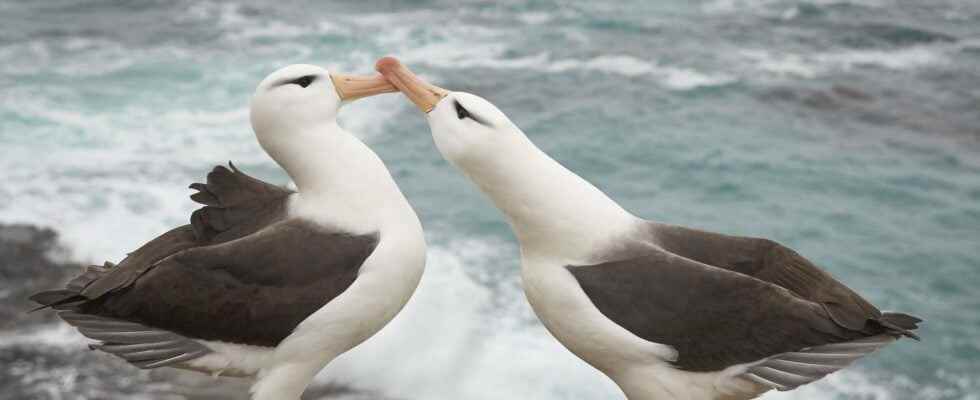Albatrosses are monogamous, but divorce occurs when a couple struggles to have or raise young. A study shows that climate variability also pushes females to divorce.
You will also be interested
[EN VIDÉO] Interview: are birds the last descendants of dinosaurs? With the multiple discoveries of feathered dinosaurs in China, the question of the link with birds arises. Could these latter be the descendants of these extinct creatures? Futura-Sciences interviewed Éric Buffetaut, paleontologist, to find out more about the issue.
The albatross black-browed Thalassarche melanophris are birds monogamous sailors, in which pairs are usually formed for life. However, apart from the loss of one of the partners due to predation for example, pairs can be reworked if their ability to have and raise young is low. Since intrasexual competition is very strong, the couples that form are in fact not always optimal and a divorce allows, after a parental failure, to try to improve the relationship. reproductive success of one or both partners.
Divorce rates among cash long-lived seabirds are quite low because it is advantageous for them to keep a long time a partner to establish a robust coordination; the chances of a partner dying quickly, and therefore of waiting for his return in vain, are low and it is costly in terms of energy to often start looking for a new partner.
Water temperature influences access to food
The divorce rate in a population of T. melanophris of the Falkland Islands is however also linked to climate variability. A study published in Proceedings of the Royal Society B Indeed, reports that between 2004 and 2019, the divorce rate of this population increased during the years when ocean surface temperatures were warmest. Such temperatures indeed induce lower primary and secondary productivity and therefore reduce access to food for albatrosses. The authors also indicate that the decision to divorce is taken by the females who have, subsequently, more chances to reproduce with a new partner and to succeed in breeding than with the males they have left.
Interested in what you just read?
.
fs11
